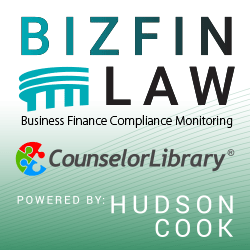Business Lending
Funding Circle US Lays Off 120 Employees
July 9, 2020Funding Circle US laid off 120 employees yesterday, according to a post shared by Ryan Metcalf, Head of U.S. Regulatory Affairs and Social Impact.
Reuters reported that the company will also centralize its technology development in the UK rather than have a separate US team going forward.
The US operation had largely been focusing on PPP lending and SBA 7(a) loans since the shutdowns occurred.
The announcement coincided with its UK business being approved to participate in the Bounce Back Loan Scheme.
Breakout Capital Weathered The Storm And Came Out With Expanded Access to Credit
July 8, 2020 Breakout Capital never stopped funding. That’s what CEO & President McLean Wilson recently shared with deBanked. The company not only weathered the storm but has come out with expanded access to credit totalling $20MM with Medalist Partners, one a current term loan facility and the other a new term loan facility with “attractive” forward flow features.
Breakout Capital never stopped funding. That’s what CEO & President McLean Wilson recently shared with deBanked. The company not only weathered the storm but has come out with expanded access to credit totalling $20MM with Medalist Partners, one a current term loan facility and the other a new term loan facility with “attractive” forward flow features.
The company said in its announcement that these facilities will allow Breakout to increase loan originations across all of its product offerings, including its term-loan product, FactorAdvantage®, and its newest factor product, FactorBridge.
“Small businesses are at the core of our economy and they were, as we were, largely blindsided by recent economic interruptions,” Wilson told deBanked. “We adapted quickly and rolled with the punches and never stopped funding. It is a testament to the resiliency, loyalty and borrower first mentality that Breakout Capital has not only weathered the storm, but has strengthened our company throughout the past few months. We quickly adapted to a new way of thinking, which helped us serve our clients in real time and forge ever closer relationships with our factor partners, lenders, online marketplaces, ISOs and borrowers.”
John Slonieski, Director of Private Credit for Medalist Partners, said in the announcement that “We are pleased to enhance our relationship with Breakout Capital in our asset-based lending strategy. Their high-quality underwriting and SMB-friendly lending solutions, coupled with their talented credit and management team, provide us confidence as we continue working closely with them to successfully scale their lending program.”
Every Business That Got $150,000 or More in PPP Funds (The List)
July 7, 2020In the interest of transparency, the SBA dumped a list of more than 660,000 businesses that got $150,000 or more in PPP funding.
You can download the entire thing right here.

Canadian Small Business Lender Looks Doomed In Wake of COVID-19
June 29, 2020 As well-known (1, 2) small business lenders in the United States continue to negotiate COVID-19 era workouts with their creditors, another in Canada appears to be falling off the cliff.
As well-known (1, 2) small business lenders in the United States continue to negotiate COVID-19 era workouts with their creditors, another in Canada appears to be falling off the cliff.
On Thursday, Lendified’s President & Director Kevin Clark tendered his resignation effective July 3rd. He follows other board members Edward Kelterborn and Benjy Katchen whose resignations went into effect on June 25th. Company CFO Norman Tan previously resigned on June 9th and no replacement has been named.
COVID-19’s arrival came at a difficult time for Lendified. Before COVID, the company had never turned a profit or reported positive cashflow in its entire history.
“Lendified is in default in respect of credit facilities with its secured lenders. Forbearance and standstill agreements are being discussed with these senior lenders, with none indicating to date that any enforcement action is expected although each is in a position to do so,” the company said. “However, no formal agreements in this regard have been concluded as of the date hereof.”
The company expressed that it would not be able to continue operations if it was not able to finalize a forbearance on its defaults AND simultaneously obtain an immediate infusion of capital to fund its operations.
Lendified’s board of directors is presently considering selling its assets or its entire business in order to raise revenue.
A wholly owned subsidiary of Lendified, Judi.ai, an automated loan underwriting platform, is poised to cease operations as a result of a cashflow shortfall. “[Judi.ai] requires cash infusions in the amount of approximately $100,000 per month in order to maintain operations,” Lendified reported. “Its cash reserves at this time are approximately $80,000. At this time, the Company is not in a position to continue to fund the Business and there can be no assurances that it will be able to do so in the future.”
The company went public on the Toronto Stock Exchange on May 26th via a reverse merger and has since experienced a 95% drop in its share price. The company’s market cap on Monday hovered around $700,000 USD.
OnDeck Update 6/23
June 24, 2020On June 23rd, OnDeck filed the following statement with the SEC:
On June 23, 2020, we obtained a limited consent (“Consent”) for our corporate debt facility (“Corporate Facility”). Under the Consent, the lenders consented to delay the effectiveness of the increased monthly principal repayments until July 14, 2020 (or such later date as may be agreed by the Administrative Agent), which were triggered by an Asset Performance Payout Event (Level 2) (“APPE”) that occurred on June 17, 2020. In consideration for the Consent, the Company agreed to make a $5 million principal repayment (“Repayment”) substantially concurrent with the execution of the Consent. Under the Consent, the lenders also agreed that, at the Company’s option, the Repayment will either (i) reduce the amount of the monthly principal repayment due on July 17, 2020 by the amount of the Repayment or (ii) if the parties enter into an amendment on or prior to July 17, 2020, be credited towards any principal repayment required under that amendment. The Company entered into the Consent in contemplation of entering into a broader amendment to the Corporate Facility to address impacts stemming from the COVID-19 pandemic. If such an amendment is not entered into, the APPE triggers $21 million monthly principal repayments which, if not cured, would commence on July 17, 2020 and continue until the Corporate Facility is repaid in full. The Company made a payment of approximately $13 million on June 17, 2020 as a result of the previously disclosed Asset Performance Payout Event (Level 1), bringing the total balance outstanding as of that date to approximately $92 million. The Revolving Commitment Termination Date occurred as a result of such Level 1 event. Certain capitalized terms not defined in this section of the report are used with the meanings ascribed to them in the Corporate Facility as amended by prior amendments thereto and the Consent.
Shares of OnDeck closed at 86 cents yesterday. The company was previously warned that long-term pricing below $1/share would result in delisting from the New York Stock Exchange.
IOU Financial Affected By COVID-19
June 23, 2020IOU Financial approved the re-appointment of all of its current directors and auditors yesterday. The company, however, is currently experiencing challenges similar to other online lenders.
In late May, the company filed its Q1 financials and revealed that the COVID-19 pandemic had put them in an “over-advance position with its financing credit facilities.” At the time, the issue remained “uncured” and “the company received default notices subsequent to quarter end.”
“The Company and the financing credit facilities are working together to remedy the situation,” IOU reported. “Nevertheless, there is no assurance that these initiatives will be successful.”
IOU had furloughed 40% of its full-time employees and implemented a temporary 20% reduction in salary for all remaining employees commencing on April 1, 2020.
The company’s market cap has plummeted to CAD$7 million, down from $18 million in February. The company had previously been on a fairly positive trajectory until Q1 when they cranked up their provision for loan losses in anticipation of the fallout caused by the pandemic.
Kabbage and Uber Partner for PPP
June 18, 2020 Two months after its first round, Kabbage and Uber have partnered to offer a streamlined PPP application process for the latter’s drivers. In a surprise move, the companies have come together to offer Uber drivers a fast-tracked and automated option to apply for the Payment Protection Program. According to a Kabbage press release, the specialized application will be sped up by prepopulating relevant information, outlining eligibility, and automated decision-making.
Two months after its first round, Kabbage and Uber have partnered to offer a streamlined PPP application process for the latter’s drivers. In a surprise move, the companies have come together to offer Uber drivers a fast-tracked and automated option to apply for the Payment Protection Program. According to a Kabbage press release, the specialized application will be sped up by prepopulating relevant information, outlining eligibility, and automated decision-making.
“They basically will go through a totally separate path that’s purpose-built for Uber drivers,” said Kabbage CEO Rob Frohwein in the statement. “With more than $100 billion left in the PPP, there is a meaningful opportunity for the self-employed to still apply and receive funding. With Uber, we aim to provide hundreds of thousands of more independent contractors access to federal funding.”
With Uber defining its drivers as independent contractors rather than employees, these drivers were initially ineligible for certain unemployment benefits. However the CARES Act expanded these benefits to include independent contractors from various industries.
This is not Uber’s first foray into providing some sort of assistance for its drivers. Following the signing of the CARES Act in March, the ride-hailing company released a detailed guide for its drivers explaining how to apply for these benefits. As well as this, in France the company has offered drivers emergency grants during the pandemic as well as a stipend to cover sterilizing and safety products.
For Kabbage, this marks a step away from the dark days of late March which saw the company close its offices in Bangalore, India; cut executives’ pay; and furlough an unspecified but “significant” amount of its previously 500-person United States staff, according to a company memo.
The PPP program, which ran out of money within two weeks of its first round, had more than $130 billion left to give to business owners by June 9, just three weeks before the SBA is scheduled to close the application process on June 30.
Good Internet Connection: A Recap of Broker Fair Virtual’s Debut
June 17, 2020 Last week’s Broker Fair Virtual was the first of its kind for the industry. The day-long event offered talks and networking, just like the in-person event, albeit without the catering service and open bar. Offering a digital space that included a virtual auditorium, networking lounge, expo hall, and individual company booths, the event attempted to recreate the experience of connecting and mingling with the rest of the industry, as much as was possible.
Last week’s Broker Fair Virtual was the first of its kind for the industry. The day-long event offered talks and networking, just like the in-person event, albeit without the catering service and open bar. Offering a digital space that included a virtual auditorium, networking lounge, expo hall, and individual company booths, the event attempted to recreate the experience of connecting and mingling with the rest of the industry, as much as was possible.
Kicking off with a Matrix-inspired introduction to the virtual space led by alternative finance’s version of Neo’s mentor, Mur-pheus (Murray as Morpheus), the show then went in numerous directions, with panels and talks covering a variety of topics and sectors.
Funding Metrics’ David Frascella took to the virtual stage to talk about how his company and the industry at large have been getting through the pandemic; what’s to come for America was up for discussion with Scott Rasmussen, the veteran pollster, who elaborated on how business could be effected by the upcoming presidential election; the future of combining people with data was debated by figures from Become, Elevate Funding, and Ocrolus; Canada’s lending situation and prospects were talked through in Covid and Canadian Credit;The new normal was discussed by NYC’s Fintech Women; and John Henry, an entrepreneur and star of VICELAND’s ‘Hustle,’ spoke of his experience running businesses and what made his story a success.
As well as this selection of talks, another standout was the cannabis panel. Led by a number of industry veterans, which broke down the difference in funding marijuana-based companies compared to other deals, and what could be down the road for the industry as more states consider legalization.
National Funding’s CRO, Justin Thompson, held an extended Q&A session, fielding queries about how National has been faring through these times and what its approaches are as the economy begins to open back up.
How long-term is long-term for the coronavirus’s impact? Are SBA deals the way to go? Does the industry need to go further with its adaption to this new normal? All these questions were asked and answered in The Great Debate, a panel made up of industry figures from various backgrounds.
And brokers’ futures were considered by Lendio’s Brock Blake, United Capital Source’s Jared Weitz, National Business Capital & Service’s James Webster, and The Watson Group’s Gerald Watson. Here, the idea of a recovery, how each struggled through March and April, and PPP were all debated by the panelists, with perspectives of what’s to come leaning both ways.
There’ll be an evolution of new industries and how we do business,” Gerald Watson noted in his closing words, “just look at this conference for example.”
There was no lobby to find brokers and funders hashing out deals in relative privacy away from the expo hall, instead this was replaced by private messages exchanged. Rather than line up for some chicken wings, people chowed down to whatever was in their home on that day. And instead of gathering around a bar and finishing the day after the final talk, attendees cracked something at their desk and chatted it up in the networking lounge, recalling previous events and what was once taken for granted: the ability to connect effortlessly.
The coronavirus continues to physically keep people apart, but for one day last week the industry was able to come together and network, make deals, and gain insight; albeit in a different way, internet connections providing.





























